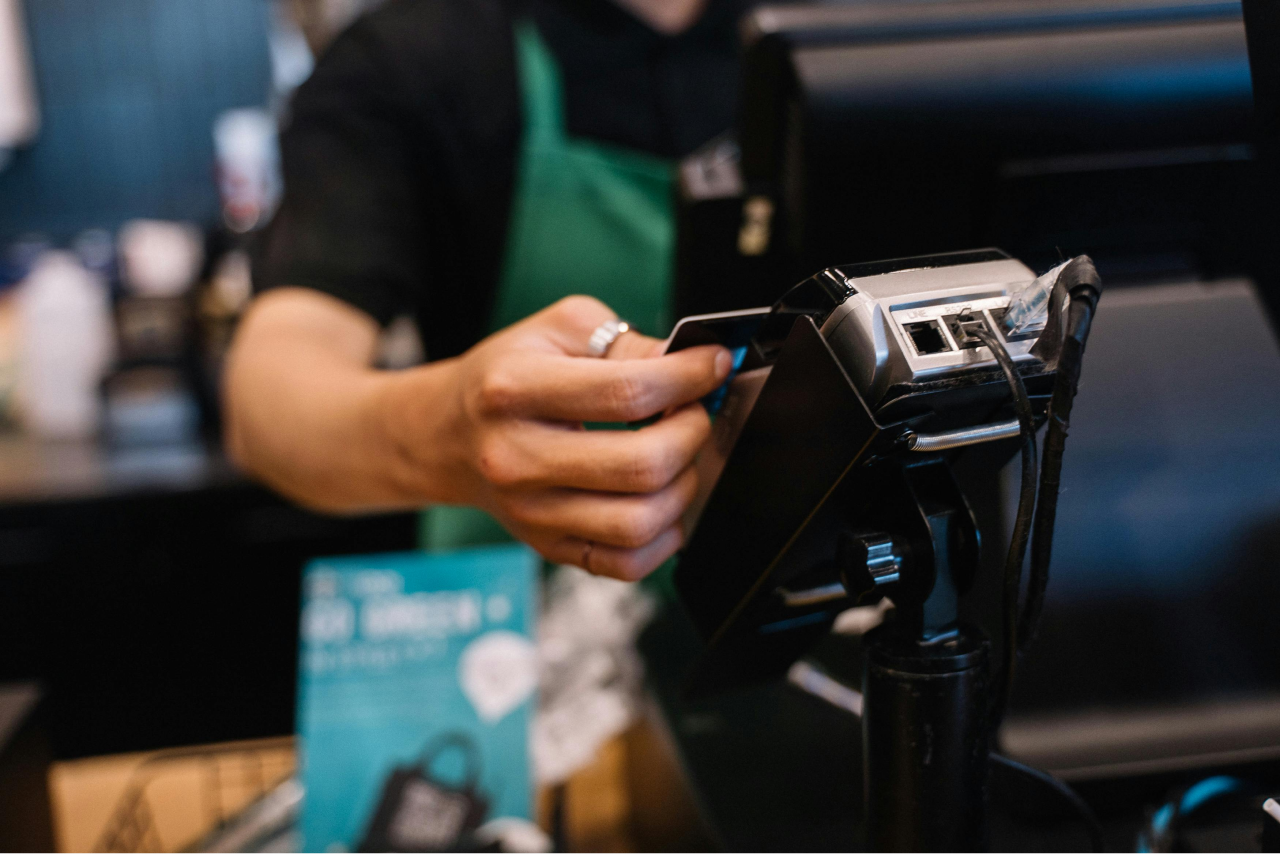
By Traci Schell February 6, 2025
Efficient payment processing is the backbone of any successful small business in today’s fast-paced economy. It ensures smooth transactions, enhances customer satisfaction, and maintains consistent cash flow. However, the complex systems and technical jargon often make payment processing seem daunting. This guide simplifies the essentials, helping small business owners gain a clear understanding of how payment processing works and why it matters.
What Is Payment Processing?
At its core, payment processingfacilitates the transfer of funds from a customer to a merchant during a transaction. Whether in-person, online, or via mobile devices, every transaction involves a series of steps and several entities working together.
The process begins when a customer makes a purchase using their preferred payment method, such as a credit card, debit card, or digital wallet. The merchant’s point-of-sale system or online checkout connects to a payment gateway, which securely transmits the transaction details to a payment processor. The payment processor communicates with the customer’s bank (issuing bank) to verify funds and with the merchant’s bank (acquiring bank) to complete the transaction. Once the issuing bank authorizes the payment, the funds are processed and settled into the merchant’s account.
This sequence ensures payments are secure, accurate, and efficient. Understanding these steps empowers small business owners to manage transactions confidently and troubleshoot issues effectively.
Key Components of Payment Processing

Payment processing involves several interconnected elements that work together to ensure seamless transactions. While the technicalities may vary, the essential components include the merchant account, payment gateway, and payment processor.
A merchant account is a special type of bank account that enables businesses to accept credit and debit card payments. It acts as a temporary holding account where funds from card transactions are deposited before being transferred to the business’s regular bank account. Without a merchant account, businesses cannot process card payments.
The payment gateway is the technology that securely transfers customer payment data from the merchant to the payment processor. For e-commerce businesses, it ensures that sensitive information, such as card numbers, is encrypted and protected from unauthorized access. Meanwhile, the payment processor is responsible for facilitating communication between the merchant’s bank, the customer’s bank, and the card network to complete the transaction.
Each of these components plays a vital role in ensuring that payments are processed efficiently and securely. By understanding these elements, small business owners can make informed decisions when selecting a payment system.
Types of Payment Methods
Offering diverse payment methods can significantly enhance customer satisfaction and broaden your market reach. Today’s consumers expect flexibility, and small businesses must adapt to meet these expectations.
Traditional payment methods, such as credit and debit cards, remain the most popular options for both in-store and online transactions. Cards are widely accepted, convenient, and offer security features that protect both the merchant and the customer. However, the rise of digital wallets like Apple Pay, Google Wallet, and PayPal has introduced a new level of convenience. These payment methods allow customers to pay using their smartphones, adding speed and security to the process.
Automated Clearing House (ACH) transfers provide another option, enabling direct bank-to-bank payments. ACH is often used for recurring payments like subscriptions or invoices. While not as common in retail settings, it offers cost-effective solutions for specific business models. Cryptocurrencies, though still niche, are also gaining traction as a payment method. Accepting cryptocurrencies can position a business as forward-thinking, but it requires an understanding of the volatility and unique challenges associated with digital currencies.
By offering a mix of payment options, businesses can cater to a broader audience and create a more seamless customer experience.
Why Payment Processing Matters for Small Businesses

Effective payment processing is about more than just completing transactions; it’s integral to your business’s success. A smooth and secure payment process enhances customer trust, which is crucial for repeat business and word-of-mouth referrals. Customers who experience delays, errors, or security issues are unlikely to return.
For small businesses, the right payment processing system can also improve operational efficiency. Integrated systems that combine payment processing with inventory management, sales tracking, and reporting tools reduce administrative workload and streamline daily operations. Additionally, modern payment processors often include built-in fraud detection and prevention features, protecting businesses from costly security breaches.
Moreover, the flexibility to accept various payment methods, including mobile and online payments, allows small businesses to compete with larger companies and adapt to changing consumer preferences. Whether you run a retail store, an online shop, or a service-based business, efficient payment processing ensures that transactions are fast, secure, and reliable.
Choosing the Right Payment Processor
Selecting the right payment processor is a critical decision for small business owners. Several factors should be considered to ensure the system aligns with your business needs.
Start by evaluating the costs. Payment processors typically charge transaction fees, monthly fees, and setup fees. Understanding these costs and how they impact your profit margins is essential. Some processors also charge additional fees for specific services, such as chargeback handling or international payments. Be sure to review the pricing structure thoroughly before committing.
Ease of use is another important factor. A user-friendly payment system reduces training time for employees and minimizes errors during transactions. Look for solutions that integrate seamlessly with your existing software, such as accounting tools or e-commerce platforms. This integration ensures smoother operations and better reporting.
Security is paramount when dealing with customer payment information. Choose a payment processor that complies with the Payment Card Industry Data Security Standard (PCI DSS) and offers robust fraud prevention tools. Customer trust is built on the assurance that their information is safe.
Finally, consider customer support. Reliable and accessible support can save you time and frustration in the event of technical issues or disputes. A payment processor with 24/7 support ensures that help is always available when you need it.
Common Challenges in Payment Processing
While payment processing is essential, it comes with its share of challenges. Understanding these issues can help small business owners prepare and adapt.
One common challenge is managing fees. Transaction fees, chargeback fees, and hidden costs can add up, especially for small businesses with tight margins. Regularly reviewing your processor’s fee structure and negotiating rates can help reduce costs.
Security concerns are another significant issue. Fraudulent transactions, data breaches, and identity theft pose risks to businesses and customers alike. Investing in secure payment systems and staying updated on the latest security protocols can mitigate these risks.
Technical issues, such as system outages or slow processing speeds, can disrupt operations and frustrate customers. Choosing a reliable payment processor with a track record of uptime and fast processing times is crucial.
By anticipating these challenges and taking proactive steps, small business owners can ensure their payment systems remain efficient and secure.
The Future of Payment Processing
The payment processing landscape is continually evolving, driven by advancements in technology and changing consumer behaviors. Contactless payments, biometric authentication, and blockchain technology are just a few innovations shaping the future of transactions.
For small businesses, staying informed about these trends is essential. Adopting new technologies can improve customer experiences and give your business a competitive edge. However, it’s equally important to balance innovation with practicality, ensuring that any new system aligns with your business needs and budget.
As digital payments become the norm, the ability to adapt and embrace change will be key to thriving in an increasingly cashless society.
Conclusion
Understanding payment processing is vital for small business owners looking to streamline operations, enhance customer satisfaction, and stay competitive. From knowing the components of a payment system to selecting the right processor and addressing challenges, this guide provides a foundation for managing payments effectively. By prioritizing secure, efficient, and flexible payment options, you can set your business up for long-term success.